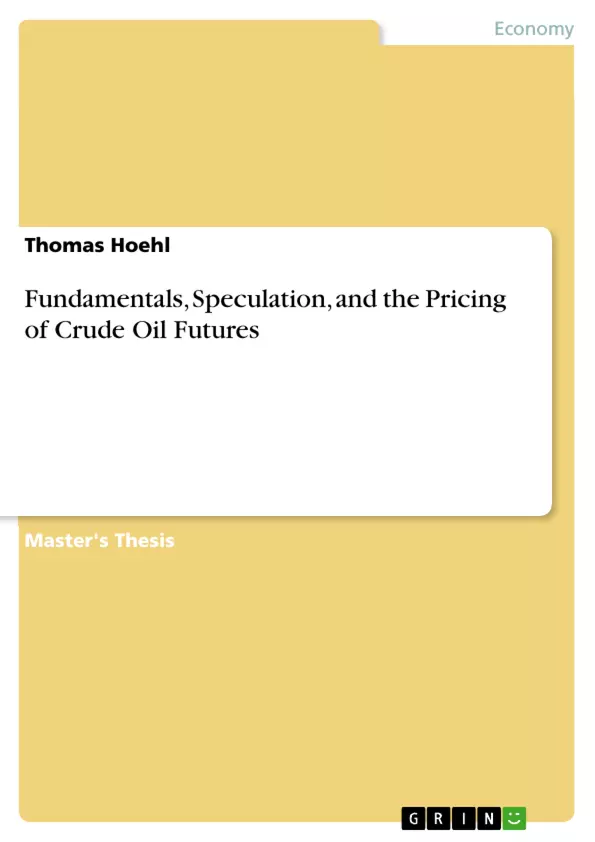This study finds that while a large part of the variation in crude oil futures prices is driven by fundamental factors, financial investment and speculation has the potential to aggravate reactions to changing fundamental variables and furthermore move prices on its own. The evidence is gathered by performing linear regressions and Granger Causality tests on futures returns, position data of different categories of futures traders on the New York Mercantile Exchange and proxies for relevant fundamental factors such as equity and exchange rate returns gathered from August 2006 to December 2010. While higher prices for crude oil naturally come along with increasing physical demand and finite world supply, future regulation might temper market volatility and guarantee that prices reflect a sustainable physical market equilibrium. The study also gives an overview of commodity market regulation and position limits on futures markets.
Inhaltsverzeichnis (Table of Contents)
- Chapter 1: [Insert Chapter 1 Title Here]
- Chapter 2: [Insert Chapter 2 Title Here]
- Chapter 3: [Insert Chapter 3 Title Here]
- Chapter 4: [Insert Chapter 4 Title Here]
- Chapter 5: [Insert Chapter 5 Title Here]
- Chapter 6: [Insert Chapter 6 Title Here]
- Chapter 7: [Insert Chapter 7 Title Here]
- Chapter 8: [Insert Chapter 8 Title Here]
- Chapter 9: [Insert Chapter 9 Title Here]
Zielsetzung und Themenschwerpunkte (Objectives and Key Themes)
The main objective of this work is to [Insert concise description of the work's objective]. This is achieved through an exploration of several key themes.
- Theme 1: [Insert concise description of theme 1]
- Theme 2: [Insert concise description of theme 2]
- Theme 3: [Insert concise description of theme 3]
- Theme 4: [Insert concise description of theme 4]
- Theme 5: [Insert concise description of theme 5]
Zusammenfassung der Kapitel (Chapter Summaries)
Chapter 1: [Insert a concise summary of Chapter 1, focusing on main themes and arguments. Avoid spoilers.]
Chapter 2: [Insert a concise summary of Chapter 2, focusing on main themes and arguments. Avoid spoilers.]
Chapter 3: [Insert a concise summary of Chapter 3, focusing on main themes and arguments. Avoid spoilers.]
Chapter 4: [Insert a concise summary of Chapter 4, focusing on main themes and arguments. Avoid spoilers.]
Chapter 5: [Insert a concise summary of Chapter 5, focusing on main themes and arguments. Avoid spoilers.]
Chapter 6: [Insert a concise summary of Chapter 6, focusing on main themes and arguments. Avoid spoilers.]
Chapter 7: [Insert a concise summary of Chapter 7, focusing on main themes and arguments. Avoid spoilers.]
Chapter 8: [Insert a concise summary of Chapter 8, focusing on main themes and arguments. Avoid spoilers.]
Chapter 9: [Insert a concise summary of Chapter 9, focusing on main themes and arguments. Avoid spoilers.]
Schlüsselwörter (Keywords)
[Insert a paragraph summarizing the main keywords and focus topics. Include terms like important themes, core concepts, and research focuses. For example, mention themes such as inclusive and exclusive education, empirical research findings, and relevant projects.]
- Citar trabajo
- Thomas Hoehl (Autor), 2011, Fundamentals, Speculation, and the Pricing of Crude Oil Futures, Múnich, GRIN Verlag, https://www.grin.com/document/181576



